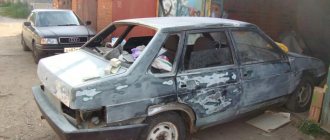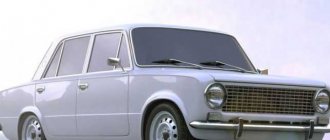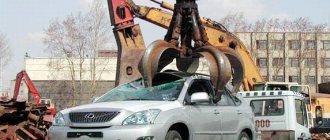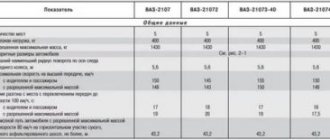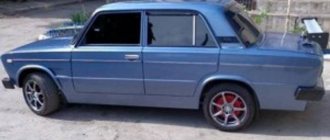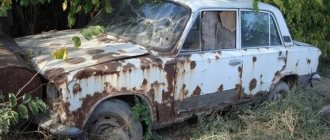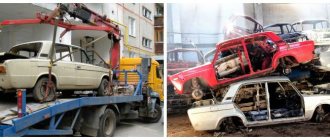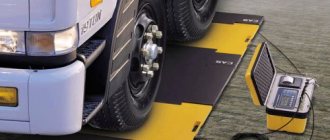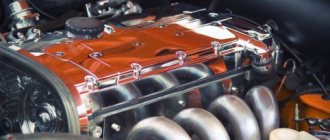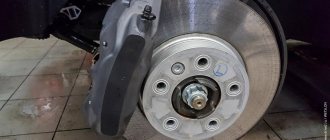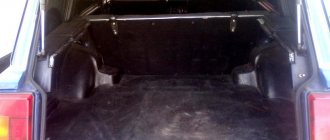As the owner of a VAZ-21099 car, I once had to face a difficult situation. Driving along a dirt road through dense forest thickets, the car performed excellently in its chassis. But when I reached my final destination and looked at the body of the car, I was simply horrified: the outer paint layer was whipped, scratched by branches and irrevocably damaged.
As you know, the price of painting in a specialized salon is now very high. Meanwhile, this complex procedure can be carried out exclusively on your own. To begin with, I had to familiarize myself with some of the dimensions and general data.
Getting to know the body
The main part of the VAZ 21099 body is the frame. It includes several elements connected to each other by welding. The latter is mostly made with dots or seams, but those components of the frame that bear a large load are reinforced with an arc.
Frame
Thanks to its non-separable design, the frame or frame of the VAZ 21099 car is incredibly resistant to destruction and has sufficient rigidity. All the main units and components of the car are supported on it, including the attached parts of the body, as well as various interior components.
Attachment parts
Body parts of VAZ 21099 photos
As for the mounted parts of the body, these include those parts that are already connected with bolts or spot welding in some places (tack welding):
- Doors also belong to the hinged parts of the body. They come with sliding windows (side windows). The rear fixed glass has a distinctive slope inherent in VAZ models. The windshield is made of 3 layers and well polished;
Body hardware VAZ 21099
- “99” bumpers are installed in a classic way - front and rear. They are plastic, but have metal beams that significantly strengthen them;
- The seats are separate, have many adjustments, and headrests for safety. A comfortable driver's seat is installed. The rear sofa on the VAZ 21099 is not the same as that of hatchbacks and is structurally different.
VAZ 21099 body iron
Main differences and weight "99"
It will be interesting to know that the VAZ 21099 is a kind of modification of the “nine”, originally intended for export sales. Another name for the car is Lada Forma. Began production in 1990.
Body type VAZ 21099
In terms of its design features, the Lada Form is slightly different from the Lada Samara models. The main differences are in the rear of the body. As you know, instead of a fifth door, a trunk appeared here, like all classic sedans.
The VAZ 21099 turned out noticeably better than its predecessors. It showed enviable handling and high stability on the road, which was largely due to the well-designed body.
Just look at the ground clearance, which is 15 cm. For a convenient, comfortable ride on our roads, this is exactly what is needed. True, the ground clearance of the “99” is less than that of large crossovers and all-terrain vehicles, but if you take into account the light weight of the VAZ 2109, the advantages of the car are clearly visible. In addition, the ground clearance can be increased slightly if the wheels are “shod” with larger rims, although excessive zeal in this matter will clearly be out of place.
Note. Let us note, in particular, that the “99” body made it possible to get rid of the main drawback of all “Samarov” hatchback models, and for the most part the VAZ 2109 - the rapid contamination of the rear window in rainy weather.
In general, the ascetic “VAZ” body, due to its transformation into a sedan, allowed engineers to achieve a greater permissible load.
Strengthening the body of the VAZ 21099
People often ask on forums how much the body of the VAZ 21099 weighs? Indeed, it is very important to know this. A lot depends on the weight of the car, including dynamics, fuel consumption, etc. In this regard, the weight of “99” is practically no different from its predecessors. The curb weight of the car is 950 kg, but the body weighs about 250 kg (this is more than that of the “eight” and “nine”).
As for the overall dimensions, they, in fact, did not receive any obvious differences, apart from the length. It naturally increased by 200 mm, as a rear “sedan” overhang appeared. The exterior is the same, the interior too.
The luggage compartment allows the transportation of various cargoes. It is quite roomy, although loading things into such a high trunk is often difficult.
Control dimensions of the VAZ 2109 body
The body has a rather short length - 4006 mm, which is an obvious advantage of the car, since compactness is important in urban environments. If we compare the manufacturer’s previous models, the body length of the VAZ 21099 was reduced by 120 mm, while there was 60 mm more space inside thanks to rational and correct design solutions.
The first production VAZ 2109 cars had a body width of 1650 mm, however, after a few months, the developers managed to reduce it by 30 mm to 1620 mm, this further increased the compactness of the body.
The body height is approximately 1402, which is 30 mm comparatively less than the body of its predecessor models. But the designers were able to compensate for the free space by creating car windows in a convex shape. On the one hand, this made it possible to increase the amount of free space, on the other, it made the vehicle more presentable.
The luggage compartment of the VAZ 2109 deserves special attention, which at one time made a real splash on the passenger car market. Even today, this almost revolutionary design feature has not lost its practical relevance.
The standard trunk capacity of the Nine is 330 liters, but if necessary, it can be expanded to 640 liters by folding the rear seats. All this can be done in a couple of minutes and does not require much effort.
The front wheel track is 1400 mm, and the rear wheel track is 1370 mm. The compact dimensions of the VAZ 2109 body make it possible to efficiently transport small-sized cargo around the city, even during rush hour when there are a lot of traffic jams.
Note. The compact dimensions of the “nine” create opportunities for overtaking, since large passenger cars are practically unable to maneuver in traffic jams due to the lack of sufficient free space.
Features of car recycling
Before you scrap your car, you should familiarize yourself with the principles of this procedure. The average weight of a vehicle is 1000 kg. If the entire car can be recycled, the collection point will deduct 30% for clogging. The latter includes all non-metallic elements, pollution, etc.
Let's consider how much a car for scrap metal weighs using the example of a VAZ 2105. The weight of the latter is 955 kg. Thus, taking away the blockage, we get about 660 kg. You should also take into account the price of scrap, which differs depending on the city. As a rule, in megacities, the number of rubles received for a car will significantly exceed the amount earned in a similar organization in a small locality.
Before calculating the profit from a scrapped car, you need to take into account transportation costs. If the car is a pile of metal, you need to take care of a tow truck. If there are spinning wheels and functional steering, the car can be transported in tow. Then, this expense item will not be so significant. Therefore, in order to calculate how much a Zhiguli costs when scrapped, it is not enough to know how much a VAZ 2109 or 21099 weighs for scrap metal (915 kg). It is necessary to take into account the features of recycling and the requirements of collection points. It would be useful to know the average cost of scrap metal in the region. Additional awareness will allow you to avoid fraud on the part of unscrupulous receivers.
Despite the fact that disassembling a car is a labor-intensive procedure, many owners still decide to take this step. Thus, you can sort ferrous and non-ferrous metals and hand them over separately, removing the good parts. From an economic point of view, the procedure will be justified.
Let's consider how much a VAZ 2106 weighs for scrap metal based on individual significant structural elements:
- body – about 300 kg;
- bridge – 52 kg;
- motor – 140 kg.
It should be noted that dismantling machine parts requires a lot of time and certain skills. In the absence of the latter, it would be more rational to recycle it entirely.
Painting
Painting “99” will also have a beneficial effect on the car body. If the car owner has little knowledge in this area, then you can start with less significant and visible parts, gradually moving on to more complex ones. Proper painting of the body of the VAZ 21099 will be an excellent way to modernize the car without spending a lot of money. The price of painting and tuning cars at a service station is known to be very high today.
Practical experience in painting a vehicle is, of course, the main factor in a successful result. But the technical part of the process, the basic rules, also cannot be underestimated.
The main thing is to carry out the modernization comprehensively, paying attention to the condition of the body as a whole. If it is in poor condition and needs repair and restoration, then no modernization will help it until the appropriate work is carried out. Tuning is an entire art, but by strengthening the body of the VAZ 21099 with your own hands, according to the instructions, you can significantly increase the rigidity of the body and its other indicators.
The most common vehicles in the post-Soviet space have always been considered to be the products of the Volga automobile industry. These cars faithfully served their owners for decades. Therefore, the question of how much a VAZ 2107 weighs for scrap metal does not surprise anyone. The same applies to other car models that are subject to recycling.
The Lada Seven, according to documents, has a mass of 1049 kg. However, its weight is practically no different from any other brand of car from the Volzhsky Automobile Plant. The average weight of this Soviet car, which is often scrapped, is around one ton.
Sometimes owners of relatively new cars have to go to a metal collection point. The vehicle may be damaged as a result of an accident or other accident. In some situations, from an economic point of view, the only right decision would be to scrap the car.
Sometimes drivers prefer to disassemble the car themselves. Therefore, the relevance of the question of how much a VAZ 2101 body weighs for scrap metal is understandable. Considering that Kopeyka is the oldest representative of this line of the domestic automobile industry, it is the leader among cars that can be recycled. Its scrap weight is 955 kg, of which the body takes up about 280.
Modifications
Since the start of production, modifications with carburetor and injection engines with a working volume of 1.3 liters (VAZ-210993) and 1.5 liters (VAZ-210990) have been produced in different years. The model range of JSC AVTOVAZ includes modifications of the VAZ-21099 with carburetor and injection engines 210992 (VAZ-21099i). A version with permanent all-wheel drive (Lada-Victory) was also produced, but production was discontinued due to low sales. And the model with a turbocharged 8-valve engine (Lada Sport) was produced only by individual order.
Car Features
Passenger cars of the “Sputnik” series, as models 2108 and 2109 were also designated, in addition to the same front-wheel drive, also had a similar appearance, popularly nicknamed “chisel”. Also, small cars had many common body parts and similar overall dimensions, but the weight of the VAZ-2109 was 15 kg more.
The five-door “nine”, compared to the “eight”, was considered by domestic car enthusiasts to be a more practical and versatile car. Such qualities allowed the VAZ-2109 model to first equal the 2108 version in terms of production volume, and in 1998 to become the first in terms of the number of copies produced.
The manufacturer constantly made changes to the design in order to improve the “nine”. Among the most notable are:
- new design of the front part;
- rear wiper;
- hydrocorrector of head optics;
- improved clutch design;
- increased volume of the washer fluid reservoir.
In order to reduce the weight of the VAZ-2109 and 2108, a lighter and easier to manufacture plastic gas tank was developed, but such a tank was subsequently abandoned due to poor ventilation.
Main technical parameters and modifications of the VAZ-2109
The car was produced from 1987 to 2011. Such a long period of production of the small car was facilitated by a successful design, interesting design and the following technical characteristics (basic version):
- body – hatchback;
- number of doors – 5;
- capacity – 5 people;
- length – 4.01 m;
- width – 1.65 m;
- height – 1.40 m;
- ground clearance - 16.5 cm;
- trunk volume – 330 l;
- engine model – VAZ-21081;
- type – four-stroke, gasoline;
- configuration and number of cylinders – in-line, 4 pcs.;
- volume – 1.1 l;
- power – 54.0 l. With.;
- highest speed – 154.5 km/h;
- fuel - AI-93.
The total vehicle weight of the VAZ-2109 (basic version) is 915 kg, and the mass of the main units is:
- VAZ-21081 engine – 115.0 kg;
- gearbox – 25 kg;
- body – 300 kg;
- side door – 13 kg.
How much does a VAZ 21099 weigh for scrap metal – Car for scrap metal
The Nine is quite light and thanks to this it is a moderately fast and dynamic car. The VAZ 2109 weighs only 945 kilograms. The maximum permitted weight for it is 1370 kg.
The lightest engine of the “chisels” weighs 112 kilograms, and the maximum engine weight reaches 130 kg. Despite its small dimensions, the cylinder head weighs a little more than 10 kg, and the weight of the gearbox reaches 30 kg.
Due to a very large number of questions, from 09/01/2016 we answer only questions sent to our email. Please, before asking a question, read the answers to frequently asked questions.
We sell only factory-assembled bodies; VAZ 21099 is produced only in 3 configurations.
The bodies are not produced at the plant at all at Chevrolet Niva.
The bodies for the VAZ 21093 are produced in 3 configurations: bare metal painted (doors, hood, trunk, fenders).
We do not have this information. The plant notifies about discontinuation of production 2 months in advance.
When purchasing a body, a note will be made on your PTS indicating that the body has been replaced. The VIN will be 2010. It is impossible to assemble and register a car on your own, without a title.
Body weight 250-300 kg. All bodies are assembled and painted on the AvtoVAZ assembly line. The body warranty is provided only by the manufacturer. We do not issue any warranty cards.
Bodies for the VAZ 21093 are produced in only 3 configurations. Price 72 tr. Delivery costs 14 rubles. km.+700r. loading and lashing of the body.
All bodies undergo the same training as VAZ cars.
The price of the VAZ 21099 body is 77.8; VAZt.r. Delivery costs 14 rubles. km+700r. loading and lashing of the body. The third configuration is bare metal painted (doors, hood, trunk, fenders).
Bodies are delivered by car with a trailer. Therefore, delivery of two bodies at once is not possible. When unloading, a man's strength is required - unloading manually by the customer. Body weight 250-300 kg. 4 people are enough.
Technical characteristics of the VAZ 21099 body
| Body type | 4-door sedan |
| Length/width/height, mm | 4205/1650/1402 |
| Wheelbase, mm | 2460 |
| Front/rear wheel track, mm | 1400/1370 |
| Ground clearance, mm | 160 |
| Weight in running order, kg | 970 |
| Total weight, kg | 1395 |
| Body weight, kg | 258 |
| Wheel formula/drive wheels | 4x2/front |
Modernization
Since 1997, at the AvtoVAZ pilot production they began to simultaneously produce the VAZ-2115 model, which was a restyled version of the VAZ-21099 and the first car of the so-called Samara-2 family.
Since 1999, an option has appeared with a “Europanel” and “Eurosalon” from Samara-2.
At the end of 2004, the VAZ-21099 was discontinued by AvtoVAZ and completely replaced by the VAZ-2115 model, after which a license was purchased for the production of the model in Ukraine by ZAZ JSC. At the end of 2011, production of the VAZ-21093 (hatchback) and VAZ-21099 (sedan) was finally discontinued[5].
LADA Victory (VAZ 21099)
— the difference from the base model was that Victory was an all-wheel drive (4x4) car. The car was made according to this principle: they took a VAZ 21099, added a transmission, in particular an angular gearbox, a viscous coupling and a rear axle gearbox from a Volkswagen Golf Syncro, and the result was a VAZ 21099 Victory.
The axle shafts remained from the base model, one transmits torque from the engine to the rear axle, and two more serve to drive the front wheels. The exterior of the Victory differed from the basic modifications of the VAZ 21099 by a rear spoiler; the car was equipped with alloy, fourteen (14″) inch sports wheels and bright red “Victory” and “4×4” nameplates on the trunk lid.
The exhaust system was also changed on Victory, and the engine was installed with a volume of 1600 cm². Speaking about the technical characteristics of the car, we can note the good acceleration dynamics of the Victory, which is not surprising, because the engine was installed with a boost.
All-wheel drive provided the car with simply amazing maneuverability, but due to its cost, the VAZ 21099 Victory was not widely used, and production of the car was curtailed. The car was also exported to countries in Europe, Asia, Africa, North and South America.
Painting process
In the case where a car enthusiast has insufficient knowledge in the field of restoring an impeccable appearance, then it is worth starting with individual parts. Then gradually gain the necessary experience.
- I had to completely disassemble the interior, dismantle the doors, and also remove the handles, headlights and other loose parts. When the frame is ready, the preparatory work begins. It was necessary to clean out numerous areas of corrosion using sandpaper and a wire brush.
- Next, the most damaged surfaces were leveled using putty, primer and subsequent sanding. In some places, straightening was even required, aimed at ideally restoring the geometry of the body.
- After each action, it was necessary to clean the parts exposed to work from dust and other contaminants. This is necessary in order to achieve higher quality in the final result.
It is advisable to carry out any stages of the technical process in a pre-cleaned garage. Having previously prepared all the tools and materials needed directly for painting, so that you do not have to be distracted during the main event.
Parts that cannot be painted had to be previously protected with plastic film attached to the body with masking tape.
Once all the prep work was completed and the doors were individually painted, I began the main paint application. Using a spray gun, I applied first the first layer, then the second and finished with the third. Between each stage it was necessary to take a break to dry the applied layer.
The conclusion was the application of varnish, which acts as a protective layer and can give the body a new and more presentable appearance.
This had to be done in two layers, and when the car was finally completely dry, the dismantled components and parts were installed in place. After which the updated vehicle again became suitable for its impeccable operation.
Body reinforcement
Strengthening the body of the VAZ 21099
The body of the VAZ 21099 needs, whatever one may say, modernization. It was made at the factory as a simple body, not distinguished by any “tricks”. Let's not forget that in 1990, the entire automobile production of our country was still at the “Soviet” level and, accordingly, there was no advanced equipment there.
Many car enthusiasts began to bring the car body to the appropriate level, introducing foreign tuning ideas. You can still find ready-made “99” tuning kits on sale.
Note. For the most part, door handles, rear lights and bumpers were previously subject to tuning.
Recently, fans of this car have begun to tune the suspension. Instead of the standard classic suspension, they installed a sports one. The struts were installed with short strokes and had special springs. The ground clearance was also lowered, which made it possible to better corner and maneuver at medium and high speeds.
But tuning to increase torsional rigidity is especially important. What this will give, read below.
“Tweaking” body rigidity
Body reinforcement vaz 21099
The higher the body's torsional rigidity or quality of life, the better the car turns, makes maneuvers and maneuvers in city traffic. But if this body indicator is, so to speak, “smeared,” then it becomes impossible to carry out the above actions. In addition, the body deforms and twists faster, and the suspension begins to function not as it should.
When designing the body, the designers certainly took into account a number of factors affecting the quality of life during the operation of the vehicle. They could not help but mean weight, the operation of passive safety elements, and much more. But constant loads, general environmental deterioration, extreme driving conditions - all this has a bad effect on the metal base of the car. In this case, the modernization of the vehicle is definitely prescribed.
“99” needs tuning more than its other relatives, since the car body is a sedan. And as you know, sedans can withstand loads worse than hatchbacks, the metal of such a body “gets tired” faster, and welding points are destroyed soon. Also, the rigidity indicator and the number of doors are affected.
The quality of life of the VAZ 21099 is 5500 Nm/deg, which is 1300 Nm/deg less than the quality of life of the “nine” and 2700 Nm/deg less than the quality of life of the “eight”. The fact remains that the torsional rigidity of sedans is inferior to that of 3-door and 5-door hatchbacks.
Note. On VAZ sedans, the designers managed to increase the quality of life already on the “ten” and on the VAZ 21102. 8000 Nm/deg and 8400 Nm/deg, respectively.
Spacer
Spacer for VAZ 21099 and its effectiveness
Increasing the quality of life of the body with your own hands involves, first of all, the introduction of spacers. This device is capable of increasing the indicator several times, strengthening the body. Many tests have been carried out to prove the effectiveness of such amplifiers.
Note. In addition, thanks to the spacers, the degree of deformability of the body is reduced, which cannot but have a beneficial effect on the durability of the metal frame.
It is recommended to install a spacer of medium hardness on the VAZ 21099, but it must be from well-known companies; the products are stamped in a handicraft fashion, somewhere in a garage, which cannot be considered a plus. When installing the wrong, “left” strut, there is a risk of not only wasting time and money, but also deteriorating the performance of some vehicle components.
Most often, front-wheel drive models are equipped with a front strut, but sometimes it wouldn’t hurt to install a rear strut. It can significantly strengthen the rear pillars, and the entire rear of the sedan. True, such a spacer is more necessary for Vases of recent years of production, in which the rear sofa serves as body rigidity.
So, the strut can increase the quality of life of the body by 25 percent, which will turn the standard 5500 Nm/deg into 5720 Nm/deg, which is already good.
Other Upgrade Methods
Along with installing spacers on the VAZ 21099, it is also important to introduce other devices that increase body rigidity. Here are the types of tuning known in this area, except for installing a spacer.
- Front shield reinforcement
- Subframes
- Roll cage
- Bottom brace
Also watch an interesting video about strengthening the threshold at the place where the jack is installed on the VAZ 2109 and 21099
Control dimensions of the VAZ 2109 body
The body has a rather short length - 4006 mm, which is an obvious advantage of the car, since compactness is important in urban environments. If we compare the manufacturer’s previous models, the body length of the VAZ 21099 was reduced by 120 mm, while there was 60 mm more space inside thanks to rational and correct design solutions.
The first production VAZ 2109 cars had a body width of 1650 mm, however, after a few months, the developers managed to reduce it by 30 mm to 1620 mm, this further increased the compactness of the body.
The body height is approximately 1402, which is 30 mm comparatively less than the body of its predecessor models. But the designers were able to compensate for the free space by creating car windows in a convex shape. On the one hand, this made it possible to increase the amount of free space, on the other, it made the vehicle more presentable.
The luggage compartment of the VAZ 2109 deserves special attention, which at one time made a real splash on the passenger car market. Even today, this almost revolutionary design feature has not lost its practical relevance.
The standard trunk capacity of the Nine is 330 liters, but if necessary, it can be expanded to 640 liters by folding the rear seats. All this can be done in a couple of minutes and does not require much effort.
The front wheel track is 1400 mm, and the rear wheel track is 1370 mm. The compact dimensions of the VAZ 2109 body make it possible to efficiently transport small-sized cargo around the city, even during rush hour when there are a lot of traffic jams.
Note. The compact dimensions of the “nine” create opportunities for overtaking, since large passenger cars are practically unable to maneuver in traffic jams due to the lack of sufficient free space.
Engine dismantling
You can reduce the weight of the power plant if you remove it without:
- Gearbox (its weight is about 30 kilograms);
- a head weighing approximately 10 kilograms.
As a rule, at service stations, power units are removed assembled with the gearbox, while during self-repair, dismantling is carried out without attachments. Let's give an example of engine dismantling, which is described in the car's operating instructions. The peculiarity of the work in this case is that the engine is removed through the bottom of the car. The manufacturer recommends not to disconnect the box from it, but to install the car itself on a lift.
- Disconnect the terminals and then remove the battery.
- Drain the coolant and engine oil.
- Remove the crankcase protection.
- Disconnect the muffler and remove the air filter.
- Loosen the brake booster hose clamp that leads to the powertrain inlet pipe.
- Unhook the ground from the crankcase; to do this you will need to unscrew the fasteners.
- Remove the high-voltage wire from the central contact of the distributor cover.
- Using a screwdriver, turn the spring clip and remove the block with the wires coming from the contact socket of the distributor.
- Remove the fuel hose.
- Remove the clutch cable end from the clutch drive lever.
- Disconnect the wires from the traction relay, from the generator output and from the carburetor shut-off valve.
- Disconnect the air supply hoses to the throttle and the fuel hoses leading to the carburetor.
- Remove the spring from the throttle actuator.
- Remove the speedometer and accelerator drive cables from the valve covers.
- Unhook the block with the wire from the economizer, remove the oil pressure and liquid temperature sensors in the cooling system.
- Remove the heater outlet hose and transmission drive rod.
- Next, you will need to disconnect the remaining conductors from the box and move the drive shafts to the side.
- After the steering rod and other parts are disconnected, place a stand under the engine and unscrew the nuts of the rear mounting support, then the right front and left.
Before lowering the engine, check that you have disconnected everything from it. In order to remove the engine from under the car, you need to lift the front part of it.
Weight VAZ 21099
The VAZ 21099 21099 1.3 MT sedan with a driver, a filled fuel tank, and the required amount of consumables weighs 970 (kg).
Common data:
- Car manufacturer: AvtoVAZ (Russia).
- Car class: small group II.
- Layout: front-engine or front-wheel drive.
Model range:
Curb weight of the sedan:
- VAZ 21099 21099 1.3 MT (1990 - 2005): 970 (kg).
- VAZ 21099 21099-20 1.5 MT (1994 - 2005): 970 (kg).
Permissible gross weight of the sedan:
- VAZ 21099 21099 1.3 MT (1990 - 2005): 1395 (kg).
- VAZ 21099 21099-20 1.5 MT (1994 - 2005): 1395 (kg).
Important: the front-wheel drive sedan VAZ 21099 21099 1.3 MT with a driver and four passengers, maximum permissible cargo, equipment, fuel, consumables weighs 1395 (kg).
